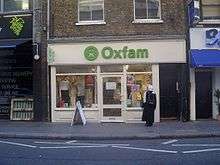Drury Lane


Drury Lane is a street on the eastern boundary of the Covent Garden area of London, running between Aldwych and High Holborn. The northern part is in the borough of Camden and the southern part in the City of Westminster.
Notable sites on Drury Lane
The street originated as an early medieval lane called Via de Aldwych, which probably connected St. Giles Leper Hospital with the fields of Aldwych Close, owned by the hospital but traditionally said to have been granted to the Danes as part of a peace treaty with Alfred the Great in Saxon times. It acquired its name from the Suffolk barrister Sir Robert Drury, who built a mansion called Drury House on the lane around 1500. After the death in 1615 of his great-great-grandson, another Robert Drury, the property passed out of the family. It became the London house of the Earl of Craven, then a public house under the sign of his reputed mistress, the Queen of Bohemia. Subsequently the gardens and courtyards of the house were built over with rows of smallhouses. The remains of the house itself, which had been progressively demolished, were finally cleared in 1809.[1] By this time Drury Lane had become one of the worst slums in London, dominated by prostitution[2] and gin palaces. The area was eventually cleared to make way for the developments of Kingsway and Aldwych.[1]
The term "Drury Lane" is often used to refer to the Theatre Royal, Drury Lane, which has in different incarnations been located in Drury Lane since the 17th century, even though today the main entrance is on Catherine Street. Also in Drury Lane is the New London Theatre.
173 Drury Lane was the location of the first J Sainsbury store, now one of the UK's largest retailers. The store was opened in 1869.[3]
191 Drury Lane was the location of the Workers' Educational Society in 1847/48.[4]
In popular culture
The street Drury Lane is where The Muffin Man lives, as mentioned in the popular nursery rhyme, and where the harlot of William Hogarth's A Harlot's Progress practises her profession.
See also
Notes
- 1 2 Bebbington, Gillian (1988) [1972]. Street Names of London. Batsford. p. 115. ISBN 978-0-7134-5449-9.
- ↑ Sir Richard Steele in The Tatler (No. 46) gives a picture of Drury Lane as a district divided into particular "ladyships," analogous to "lordships" in other places, "over which matrons of known ability preside."
- ↑ Covent Garden and Holborn Young Trails - Camden Council, 2006 (booklet)
- ↑ The Communist League Marx/Engels Internet Archive
External links
| Wikisource has the text of the 1905 New International Encyclopedia article Drury Lane. |
- 'The Strand (northern tributaries): Drury Lane and Clare Market', Old and New London Volume 3 (1878), pp. 36-44. Date accessed: 18 March 2007.
- Drury Lane, In Their Shoes, Drury Lane history resource
Coordinates: 51°30′54″N 0°07′22″W / 51.51500°N 0.12278°W